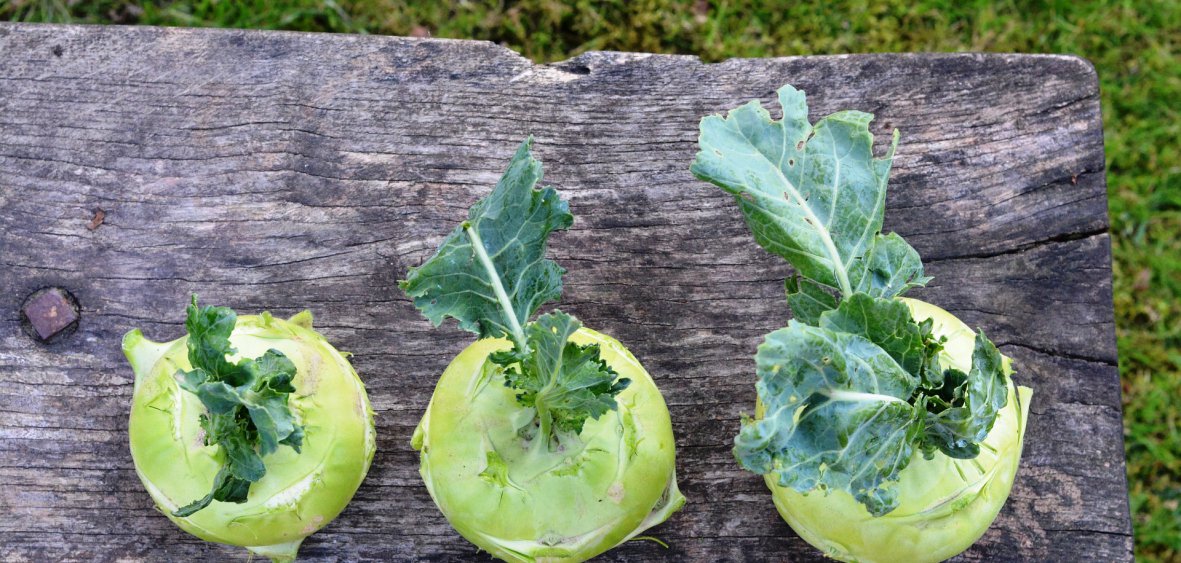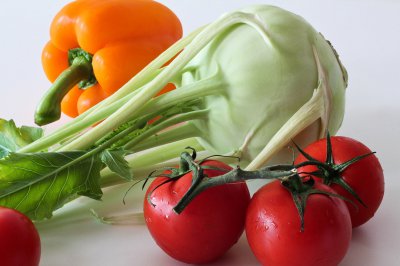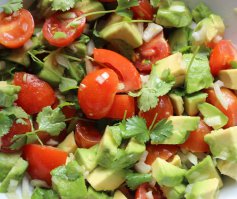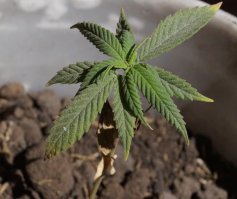Kohlrabi is a vegetable that has recently returned to grace and to our kitchens. This is a very good trend, because kohlrabi has valuable nutritional values. It contains almost all vitamins necessary for health and many equally important minerals. Additionally, the kohlrabi is rich in lutein, which protects the eyes. Kohlrabi is also a valuable source of isothiocyanins and indols - these are substances protecting the body against cancer. They should be used prophylactically by everyone who cares about their health. Why introduce kohlrabi to your diet? You will find the answers below.
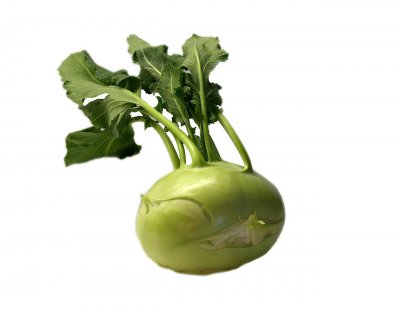
Kohlrabi (Latin Brassica oleracea var. gongylodes) is a vegetable known since ancient times. Ancient Rome appreciated not only the taste and culinary qualities of kohlrabi, but also its pro-health properties. From this time comes the historical name of kohlrabi - Pompeiian cabbage. Kohlrabi, like cabbage, Brussels sprouts, cauliflower or broccoli belongs to the cabbage family. The most important property of vegetables from this group is a high content of isothiocyanins and indols - compounds protecting against the development of cancer.
Kohlrabi - anti-cancer properties
Kohlrabi has a beneficial effect on our health, as many other green plants have a strong effect on cancer prevention. According to the results of Chinese researchers presented at the American Association for Cancer Research Congress in Chicago in 2012, kohlrabi, as well as lettuce, cabbage, broccoli, kale and cauliflower significantly reduces the risk of breast cancer, and is also used as an auxiliary treatment for this type of cancer. The research was carried out on a group of 5,000 women suffering from breast cancer in various stages. The study assumed that they would consume significant quantities of brassica vegetables over a period of 3 years. In women who introduced brassica vegetables to their diet, mortality due to cancer has fallen significantly. The study also showed a reduction in the risk of relapse.
After the analysis of the composition of cabbage vegetables, it was concluded that the main anticancer-active ingredient are sulphur compounds - glucosinolates, these substances are broken down into isothiocyanins and indoles. Wasabi (165-281 mg/100 g) and horseradish (12-160 mg/100 g) have a particularly high content of valuable glucosinolates. Other vegetables rich in these ingredients are: black radish (81-92 mg/100 g), broccoli (19-127 mg/100 g), cauliflower (23-43 mg/100 g), kale and cress (20-658 mg/100 g). One of the leading vegetables is kohlrabi, which contains 40-52 mg of these isothiocyanins and indols.
Further research is needed to better understand the mechanisms of sulfur compounds and their impact on cancer prevention.
Kohlrabi - properties
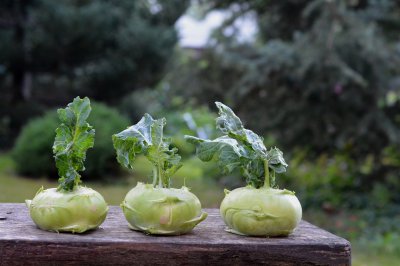 Isothiocyanins and indoles not only have an anticancer effect, they also have a bactericidal and fungicidal effect. Their action is strong, they can fight H. pylori bacteria, which is responsible for gastric and duodenal ulcers, among others. Regular consumption of kohlrabi and the inclusion of cabbage vegetables in the daily menu reduces the risk of peptic ulcer disease.
Isothiocyanins and indoles not only have an anticancer effect, they also have a bactericidal and fungicidal effect. Their action is strong, they can fight H. pylori bacteria, which is responsible for gastric and duodenal ulcers, among others. Regular consumption of kohlrabi and the inclusion of cabbage vegetables in the daily menu reduces the risk of peptic ulcer disease.
Kohlrabi is a vegetable that we should eat if we take care of our eyes. It is a valuable source of lutein - a substance that is responsible for the proper functioning of the sense of sight. Lutein accumulates in the yellow spot, the part of the eye responsible for vision and correct vision. It is mainly found in yellow and green vegetables. Lutein also has a protective function, acting as a natural filter against UVA and UVB rays. Raw vegetables are the most valuable source of lutein; they lose their properties under the influence of heat treatment.
Kohlrabi is also a vegetable inseparable in the diet of people suffering from anaemia. Kohlrabi leaves contain very large amounts of iron. People with anaemia or iron deficiency should consume it regularly.
Kohlrabi leaves also have strong cleansing properties. Kohlrabi leaves are a valuable source of chlorophyll, which shows strong detoxification properties. Additionally, it supports liver function, helps to remove toxins, regulates intestinal function and has an anti-inflammatory effect.
Kohlrabi is also an ally of people on the diet. In 100 grams of this plant there are only 27 kcal. This is an exceptionally good result. Kohlrabi is also a source of fibre. It should be included in the diet of people who are slimming and taking care of their lines.
Kohlrabi - kohlrabi
Both raw and cooked kohlrabi are very low in calories. For raw kohlrabi it is 27 kcal per 100 grams, for cooked kohlrabi it is 29 kcal per 100 grams.
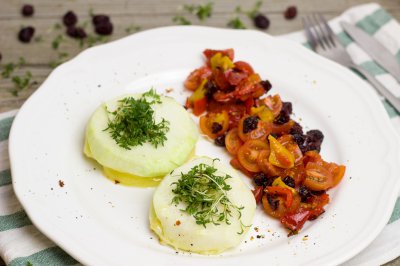
Kohlrabi - kitchen use and recipes
Kohlrabi is not only healthy, but also tasty. Young kohlrabi are delicate and crispy and can be eaten raw. In salads or cut into slices as a snack. Raw vegetables are the most nutritious and therefore have the best effect on our health.
Kohlrabi, especially young, is also recommended in the diet of diabetics. It contains only 10 % carbohydrates.
Older kohlrabi are harder, it is advisable to give them warm. Kohlrabi can be cooked, fried and baked - it is delicious and healthy in every form. An excellent idea is stuffed kohlrabi, tasty and nutritious is also kohlrabi soup. Remember that kohlrabi also has edible leaves. They are a valuable source of iron. They can be used as parsley or dill and can be used as an addition to dishes.
Kohlrabi - pig iron
Ingredients:
- 1 kohlrabi
- 1 apple
- 2 small carrots (or 1 large)
- chopped dill
- 2 tablespoons of Greek yoghurt
- juice of ½ lemon
- a pinch of salt
- Pepper, preferably freshly ground
- Alternatively, mustard (1/2 teaspoon)
Vegetables must be peeled and grated. After mixing, sprinkle with ½ lemon juice, add Greek yoghurt and spices.
Kohlrabi soup
Ingredients:
- 1 ½ kohlrabi
- 1 carrot (large or 2 small)
- 1 potato (large)
- 1 tablespoon of fresh parsley
- 1 tablespoon of fresh celery leaves
- 2 litres of poultry broth (or vegetable broth)
- 3 tablespoons of cream cream
Vegetables: wash kohlrabi, potatoes and carrots, peel and cut into cubes. Pour 2 litres of broth over the whole. You can add 1 more cubes of poultry. Then cook until the vegetables are soft. Sprinkle the soup with parsley and chopped celery leaves, then cook for a few more minutes. Mix the whole mix into a smooth cream, at the end add the cream.
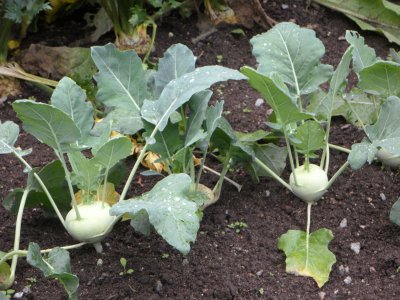 Kohlrabi - cultivation
Kohlrabi - cultivation
Kohlrabi is a vegetable grown from seedlings. The kohlrabi is planted shallow in the ground, so that it grows well it is necessary to choose sunny and moderately warm (12-18 °C) stations. It has been cultivated in greenhouses since the end of February. It is then transplanted to the ground at the end of April. Young kohlrabi can be harvested at the end of May.

